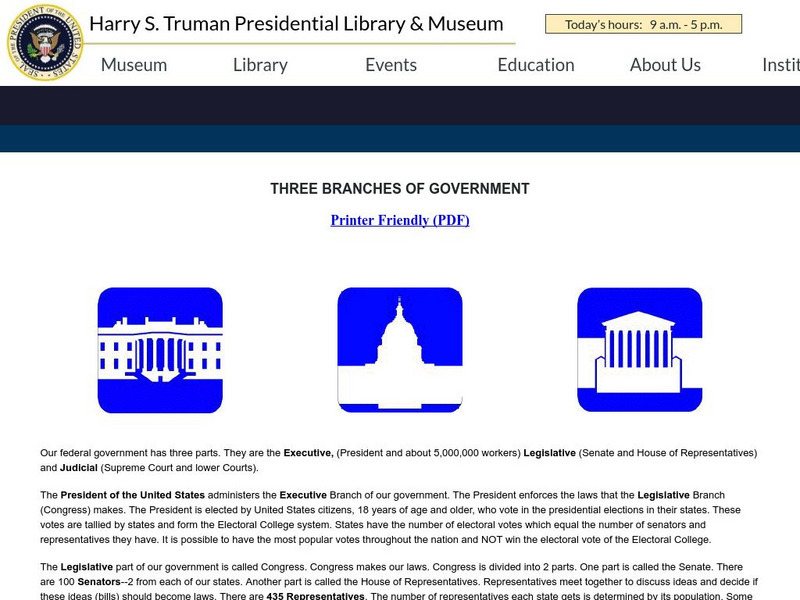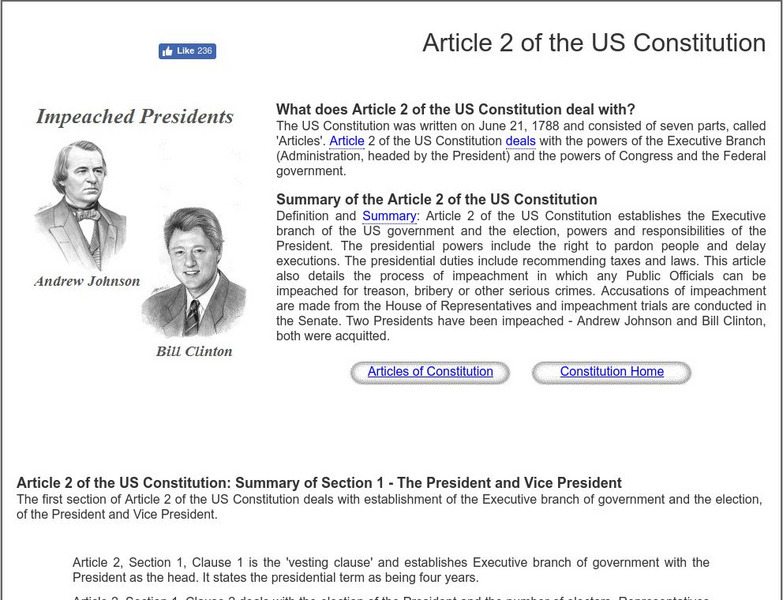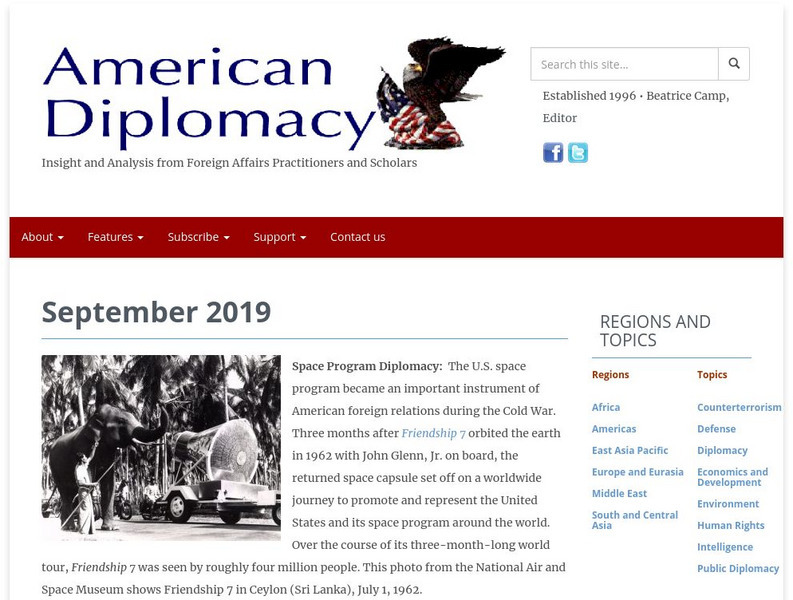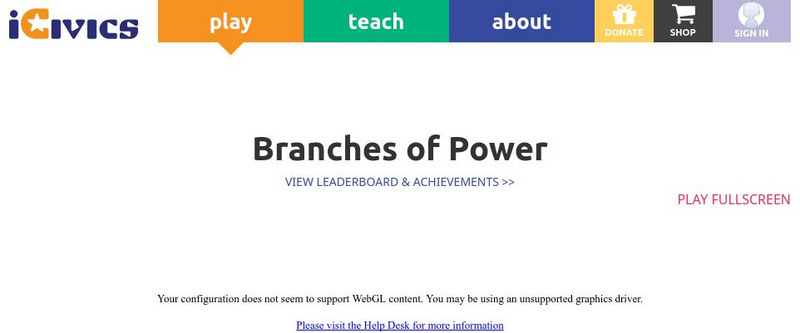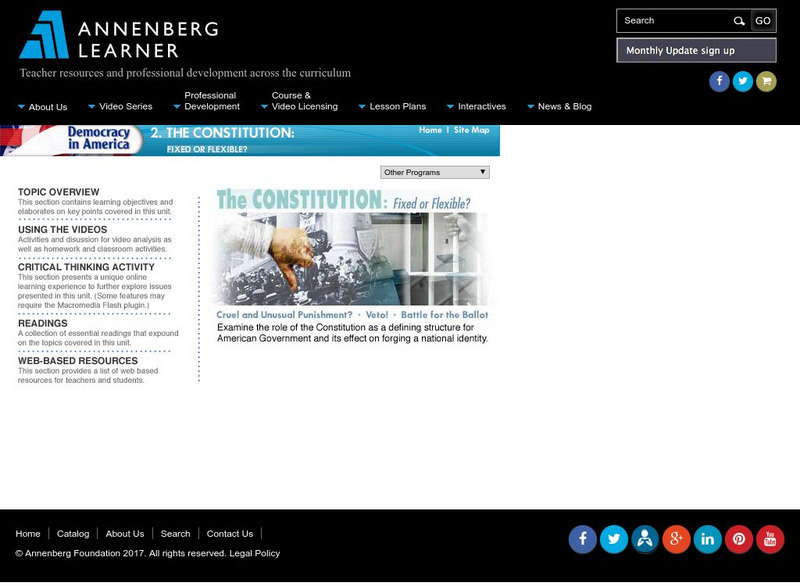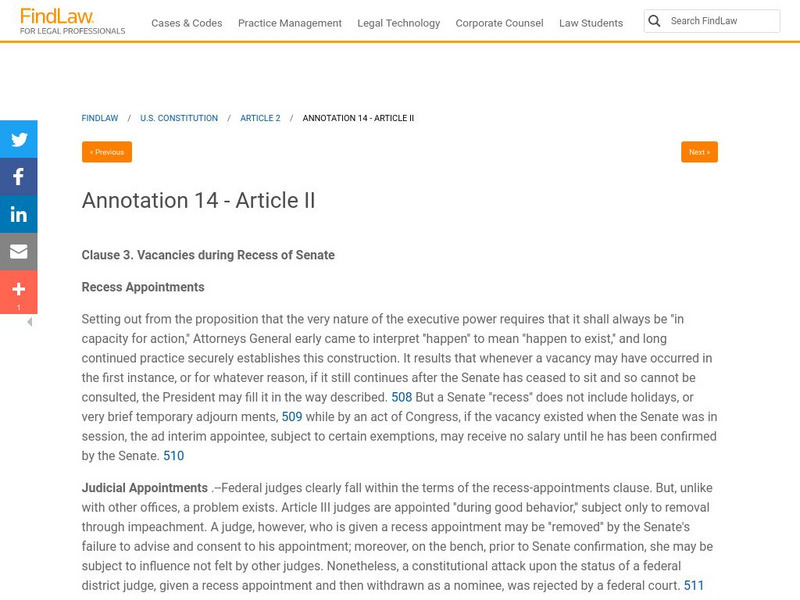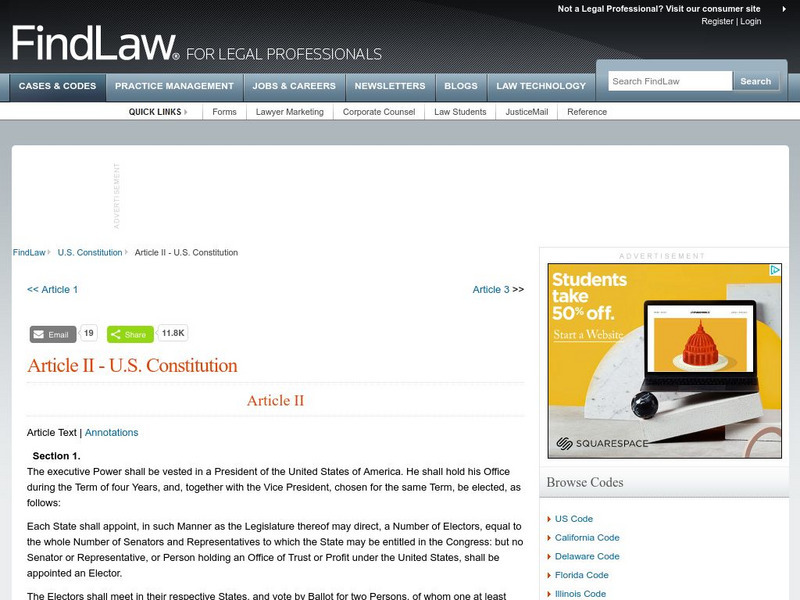Hi, what do you want to do?
US Government Publishing Office
Ben's Guide to u.s. Government: Learning Adventures: Branches of Government
Introduction to a learning adventure on the Constitution and branches of government. Students click on their age group icon to find information on which part of the Constitution spells out the powers of legislative, executive and...
TED Talks
Ted: Ted Ed: How Do Executive Orders Work?
The framers of the American Constitution made the executive power available to the executive branch. But what exactly is this tool, how does it work, and what's the extent of its power? Christina Greer explains.
iCivics
I Civics: For the President, All in a Day's Work
Young scholars learn the primary responsibilities of the president and how those duties connect to the powers the Constitution grants to the Executive Branch.
Harry S. Truman Library and Museum
Harry S. Truman Library & Museum: Three Branches of Our Government
This slide and the six that follow it (use the advance button near the bottom of the screen) offer an explanation of each of the three branches of government and the duties they perform, including discussion of the tensions arising from...
US National Archives
Docs Teach: Separation of Powers or Shared Powers
In this activity, students will analyze documents that illustrate the relationship between the legislative, executive and judicial branches. Using the scale in Weighing the Evidence, students will decide whether the United States...
Other
Usa Gov: Three Branches of Government
Lesson plans for students to learn about the three branches of government. They can find information about the origins of the Constitution, separation of powers, and details about each of the three branches.
US Government Publishing Office
Ben's Guide to u.s. Government: Branches of Government
A brief overview of the origins of the three branches of the federal government, with links to more in-depth information about each branch. Also discusses the concerns of the Founding Fathers about creating a government that had...
Siteseen
Siteseen: Government and Constitution: Article 2 of the Us Constitution
Article 2 of the US Constitution deals with the establishment of the Executive Branch, the election of the President and Vice-President, the powers and responsibilities of the President, and the process of impeachment.
Thomson Reuters
Find Law: Article Ii: Presidential Power to Use Troops
In-depth analysis of the use of presidential power to send troops abroad without consent of Congress.
Indiana University
Center on Congress: Learn About Congress
Learn about the role of the US Congress, how it works, its history, and the principles behind its creation and operation. Wonderful set of resources including FAQs, short articles and video clips, "interactive learning modules" (i.e., a...
Harry S. Truman Library and Museum
Harry S. Truman Library & Museum: Checks and Balances
Descriptions of the separate powers and functions of the three branches of the federal government. Site explains how the powers of one branch check and balance those of another.
US Mint
United States Mint: Branches of Power
Save the federal government from Oppressor Sam, and learn about the US Constitution to restore the three branches of government.
University of North Carolina
University of North Carolina Chapel Hill: American Diplomacy
An on-line magazine that provides "Commentary, Analysis, and Research on American Foreign Policy and Its Practice." Also contains articles from actual ambassadors and diplomats in the Foreign Service.
iCivics
I Civics: Branches of Power
Do you like running things? Branches of Power allows you to do something that no one else can: control all three branches of government! You'll have the power to write any laws you want about issues you choose. Careful, though, there's a...
Siteseen
Siteseen: Government and Constitution: Branches of Government
This article contains a useful guide to the functions of the three US Branches of Government that make, enforce, or interprets laws.
American Bar Association
American Bar Assoc.: Separation of Powers, Connecting the Separate Powers [Pdf]
This lesson involves role-playing to help the students understand the separation of powers. [PDF]
US National Archives
Nara: Teaching With Documents: Sioux Treaty of 1868
The National Archives and Records Administration highlights the Sioux Treaty of 1868. The lesson provided here relates to the power granted to the president and the Senate in Article II, Section 2, Clause 2, of the U.S. Constitution, the...
Annenberg Foundation
Annenberg Learner: Democracy in America: The Constitution: Fixed or Flexible?
This unit explores the timeless qualities of The U.S. Constitution, the opportunities to amend it, and how it is a pillar of the American identity, through these activities, videos, and outside resources.
Thomson Reuters
Find Law: Article Ii: Recess Appointments
Explains Clause 3 of Article II, Vacancies during Recess of Senate. It outlines various situations where a vacancy may occur and what rules are in place to deal with it.
The White House
The White House: Our Government
Overviews of the major elements of U.S. government, compiled and published by the White House: three branches of the federal government (executive, legislative, judicial), the Constitution, federal agencies and commissions, elections and...
Thomson Reuters
Find Law: Article Ii: The President as a Law Enforcer
Read Section 3 of Article II which explains what the President's duties are as Law Enforcer. The Constitution does not state that the President shall execute the laws himself, but that he will ensure that laws are "faithfully executed."
Thomson Reuters
Find Law: United States Constitution: Article Ii
Full text of Article II from the U.S. Constitution, as well as detailed annotations that explain the reasoning and subsequent impact of each clause and section of the Article. Content explores everything from the nature and scope of...
Other
Tennessee Valley Authority
This is a homepage of The Tennessee Valley Authority (TVA), an independent executive agency of the government.
University of Chicago
The Founders' Constitution: Federal v. Consolidated Government: Virginia Plan
The original text of The Virginia Plan presented at the Constitutional Convention. Discusses federal versus consolidated government.







